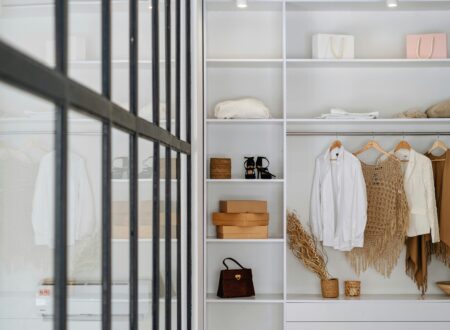Introduction: The Importance of Blog Layout Design
Every blog tells a story, but the layout can make or break that narrative. Imagine wandering into a bookstore where the shelves are cluttered and disorganized. You’d likely feel overwhelmed and leave empty-handed. The same principle applies to online content; if your blog layout is chaotic, readers won’t stick around long enough to absorb your message.
A well-designed blog layout does more than just look good—it enhances user experience, keeps readers engaged, and encourages them to explore further. With so many voices competing for attention in the digital landscape, an appealing design can be your unique selling point. Your audience is out there waiting; it’s time to grab their attention with an engaging visual journey from concept to creation. Let’s dive into how you can craft a stunning and functional blog layout that speaks directly to your audience’s needs.
Understanding Your Audience and Their Needs
Every successful blog starts with a deep understanding of its audience. Knowing who they are shapes the entire design process.
Consider their demographics, interests, and preferences. Are they professionals seeking industry insights or casual readers hunting for entertaining stories? This knowledge will guide your layout choices.
Think about their reading habits as well. Do they skim articles for key points or dive into every detail? Create sections that cater to both types of readers by using clear headings and bullet points.
Engagement is crucial. Think about how your audience interacts with content online. Are they visual people drawn to images and videos? Incorporating elements that resonate can significantly enhance user experience.
Stay attuned to feedback from your readers too. Their input can provide valuable insights on what works and what doesn’t in your current layout, ensuring you remain relevant in an ever-evolving digital landscape.
Strategizing the Visual Hierarchy
Visual hierarchy guides readers’ eyes through your blog. It helps them find important information quickly.
Start with headlines that pop. Use larger fonts or bold styles to draw attention. Subheadings should be clear, guiding the reader seamlessly into each section.
Color choices also play a crucial role. Select contrasting colors for key elements like calls-to-action and buttons. This makes them stand out against the background.
Images can enhance visual flow too. Place relevant visuals near related text to create connections in readers’ minds.
Don’t forget about bullet points and lists; they break up dense content and highlight essential details effectively.
By implementing these strategies thoughtfully, you create an engaging experience that keeps readers focused on what matters most in your posts.
Incorporating User-Friendly Navigation
User-friendly navigation is crucial in blog design. It guides readers effortlessly through your content.
Consider a simple menu structure. Clear categories help visitors find what they want quickly. Avoid overwhelming them with too many options.
Include a search bar for added convenience. This allows users to jump straight to topics of interest without fussing over the layout.
Utilize breadcrumbs as well. They show where readers are within your site, making it easier to explore related content or return to previous pages.
Ensure that links are easily identifiable and accessible on all devices. A responsive design keeps navigation intuitive, regardless of screen size.
Test different layouts periodically. Gathering feedback helps refine user experiences and can lead to improved engagement over time.
Utilizing White Space for a Clean and Organized Look
White space, often referred to as negative space, is a powerful design tool in blog layout. It’s the area surrounding your text and images that helps guide the reader’s eye. This breathing room can make your content more digestible.
A well-structured use of white space enhances readability. It allows readers to absorb information without feeling overwhelmed by clutter. When paragraphs are spaced out properly, it becomes easier for them to follow along.
Moreover, strategically placed margins create a visual flow that keeps visitors engaged. Careful attention to spacing between elements can highlight important points while maintaining an organized appearance.
Incorporating white space doesn’t mean leaving large areas empty; it’s about balance. A clean look with adequate breathing room invites users to explore further rather than bounce away from confusion or chaos on the page.
Incorporating Interactive Elements and Multimedia
Interactive elements breathe life into your blog. They engage readers and keep them coming back for more. Consider polls, quizzes, and surveys. These tools invite participation and make the reading experience dynamic.
Multimedia is equally crucial. Images, videos, and audio clips can illustrate your points in ways words cannot. A well-placed video can simplify complex ideas or evoke emotions that text alone may fail to convey.
Infographics are another powerful tool. They distill information into visual formats that are easy to digest. Readers appreciate content that presents data neatly while being engaging.
Always ensure these elements enhance rather than distract from your message. Balance is key; too much interactivity can overwhelm visitors instead of inviting exploration.
Remember to optimize all multimedia content for fast loading times across devices. Speed plays a vital role in keeping users engaged with your blog’s offerings.
The Role of Typography in Blog Layout Design
Typography is more than just choosing a font. It sets the tone for your entire blog. The right typeface can evoke emotions, create ambiance, and guide readers through your content.
Consider hierarchy when selecting fonts. Use larger sizes for headings to draw attention and smaller sizes for body text to ensure readability. Mixing different styles can add interest but do so sparingly to avoid chaos.
Line spacing also matters. Adequate space between lines makes reading easier. Crowded text tires the eyes and drives readers away.
Remember color too. High contrast between text and background enhances visibility, while subtle hues can convey warmth or professionalism.
Consistency is key. Stick with a limited number of fonts throughout your site to develop a recognizable brand identity that resonates with visitors.
Mobile Responsiveness and Compatibility
Mobile responsiveness is crucial in today’s digital landscape. With a significant portion of web traffic coming from mobile devices, your blog must look great and function smoothly on all screen sizes.
A responsive design adjusts seamlessly to different devices, enhancing user experience. When readers can easily navigate through content on their smartphones or tablets, they are more likely to stay engaged.
Testing across various platforms ensures compatibility. Use tools like Google’s Mobile-Friendly Test to identify potential issues before they affect your audience.
Fast loading times also play a role in mobile usability. Optimize images and reduce unnecessary elements that may slow down performance.
Remember, crafting a mobile-responsive layout isn’t just about aesthetics; it directly impacts how users interact with your content. Prioritizing this aspect helps maintain reader interest and boosts retention rates for your blog.
Wrap Up: Final Thoughts on
Designing an engaging blog layout is both an art and a science. It requires understanding your audience, their preferences, and how they interact with content. A well-thought-out visual hierarchy guides readers effortlessly through your posts. User-friendly navigation ensures that visitors can find what they’re looking for without frustration.
White space plays a crucial role in creating a clean appearance, allowing the eye to rest and making important elements stand out. Adding interactive components and multimedia enhances user engagement while enriching the overall reading experience.
Typography also deserves attention; it sets the mood of your blog and impacts readability significantly. Ensuring mobile responsiveness is vital as more readers access blogs via smartphones.
By focusing on these key areas, you can craft layouts that not only draw readers in but keep them coming back for more. As you refine your design skills, remember: every element contributes to the storytelling aspect of your blog. Each choice shapes how users perceive and engage with your content. Embrace this journey—your efforts will create spaces where ideas thrive and conversations flourish.





